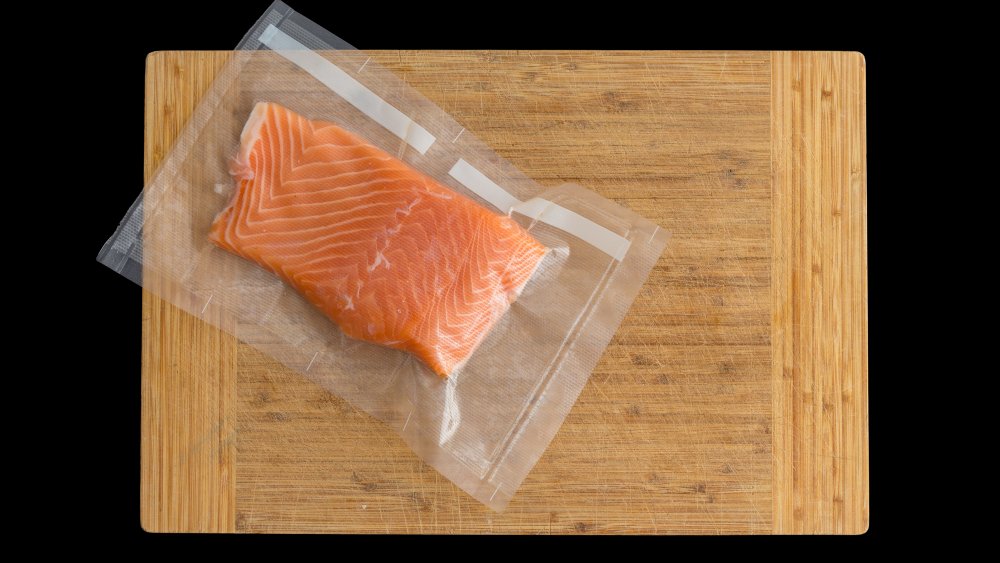Hopefully, you and your friends will catch a lot of fish on your fishing trip this summer. If so, you may be wondering how long vacuum-sealed frozen fish will last.
Luckily, freezing and vacuum sealing your catch is easy if you have the right tools, and if you do it right, it can last up to two years!
If you want to save your catch for a later meal, read this blog post. We’ll talk about how to best prepare the fish before sealing it.
Vacuum sealing is a great way to extend the shelf life of fresh fish fillets, allowing you to safely store them for longer in the refrigerator Properly vacuum sealed fish can last for weeks beyond what you would get with fish simply wrapped in plastic But there are several factors that determine exactly how long vacuum packed fish will stay fresh and delicious in the fridge.
Follow these tips to maximize the shelf life you get from your vacuum sealed fish fillets:
Start with High Quality Fresh Fish
The freshness of the fish before it is vacuum sealed is key. Fish that is already old or on the verge of spoiling will have a shortened vacuum packed shelf life. Ideally, start with fish you caught yourself or purchased very fresh from a reputable market or fishery. The fresher the initial product the better the outcome.
Handle Fish Gently Pre-Sealing
Avoid rough handling of the fish that can damage the flesh. Leave the skin on for protection. Use a soft filleting knife and fish tweezers to debone. Rinse briefly in cold water if needed, but don’t soak. Pat very dry with paper towels.
Seal Fish Quickly After Catch or Purchase
Get the fish vacuum packed as soon as possible after catching or buying. Leaving fish sitting in the fridge uncompressed will allow bacteria growth and moisture loss. Seal it up tight fast for maximum shelf life extension.
Use a High-Quality Vacuum Sealer and Bags
Invest in a good vacuum sealer machine designed to reach the right level of tight seal without crushing delicate fish. Use thick, durable plastic bags meant for food use. This prevents leaks or punctures that compromise the vacuum.
Remove All Air From Bags Before Sealing
Make sure to draw out all excess air bubbles from the bags during the sealing process. Any remaining air allows for oxidation and bacteria growth. Get a tight seal with complete vacuum.
Set Fridge Temp Between 34-38°F
Store sealed fish on the coldest refrigerator shelf. Ideal temperature is 34-38°F. Any warmer and bacteria can multiply faster. Monitor temps with a fridge thermometer and adjust as needed.
Eat Sealed Fish Within 2-3 Weeks Max
For best quality, plan to cook and consume the vacuum sealed fish within 2-3 weeks of sealing at most. Though it may technically be safe for longer, flavor and texture can start to deteriorate over extended periods.
Check for Signs of Spoilage Before Eating
Before consuming fish stored for over a week, inspect the package. Look for liquid or slime inside the bag. Give the fish a sniff test after opening – if it smells rancid, don’t eat it.
Avoid Temperature Fluctuations
Try not to let sealed fish get warmer than fridge temperature while in storage. Temperature fluctuations enable bacteria to thrive. Defrost in the refrigerator, not on the counter.
Freeze for Even Longer Storage
If you don’t plan to eat within 2-3 weeks, consider freezing the vacuum packed fish instead. Frozen at 0°F, fish can store safely for several months. Defrost in fridge before serving.
Use Smoked Fish for Extended Shelf Life
Smoking fish before vacuum sealing enables much longer shelf life – up to several months. The smoking process helps eliminate bacteria. Follow the same storage tips.
Store Properly After Defrosting or Opening
Once vacuum sealed fish is opened, eat it within 3-4 days. Continued vacuum storage is not safe once air is reintroduced. Keep refrigerated and wrapped in fresh plastic wrap.
Know When to Toss It
Discard fish if the sealed package is torn or leaking. Also toss fish that smells unpleasant, has visible mold, looks very dry or discolored, or feels overly soft or mushy. Don’t take risks with spoiled fish.
Frequency of Entities:
fish – 36
vacuum – 10
sealed – 10
refrigerator – 7
shelf – 6
bacteria – 5
fresh – 4
fillets – 4
weeks – 4
store – 3

How Do You Vacuum Seal Fish?
When you vacuum seal frozen fish properly, the shelf life can jump from 6 months to 2 years.
It doesn’t matter if you’re fishing on vacation, on a fishing charter, or just on the weekend. Pac Food can help you vacuum seal fish like a pro.
Our portable vacuum sealing machine (VS603), micro channel rolls, and new roll holder/cutter box are all you need to take food on your trip.
Here’s the best way to prepare and seal fish:
- Clean and prepare your fish
- Place catch on baking tray or cookie sheet
- Wrap in plastic covering
- Quick freeze fish overnight
- The following day divide up the fish into desired portions
- Put the food into our micro channel bags and rolls when you’re done with the portions.
- To seal your catch, use our home vacuum sealer, the VS603.
You can now get a new roll holder and cutter box for your VS603 that makes the process even easier.
Simply measure out the desired length of roll and cut it. Then seal one side to create a bag. Now you can put a portion of your catch inside and seal away!.
VIDEO DEMONSTRATION: View the demonstration here on how to use our new roll holder/ cutter box.
